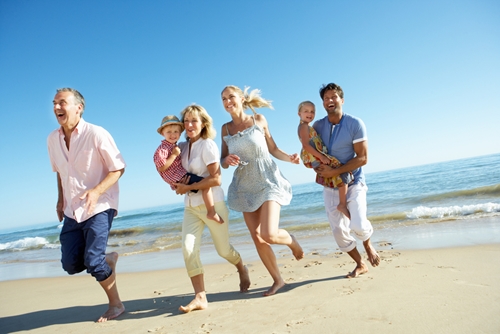
How To Be Sun Safe This Summer: What To Remember
Summer has well and truly arrived. Whether you’re hitting the beach or chilling out in the park or the back yard, there’s no mistaking that sun warming our backs. It’s time to soak up the Vitamin D, and enjoy what the season has to offer. But it’s important to remember to be sun safe.
We don’t need to fear going out in the sun, we just have to be smart about it. With the proper preparation and protection, we can make sure that the only thing frying this summer is whatever’s on the barbie.
The science behind that summer colour
While a little bit of UV exposure is a great source of Vitamin D to support healthy bone structure, too much can increase your chances of sunburn or skin damage. One of the main concerns about sunburn is the link to melanomas and skin cancer. Australia has one of the highest rates of skin cancer in the world, with levels at least double those of countries like the UK, US and Canada according to the Cancer Council Australia.
Although you might think you have a healthy glow from your tan, the biology behind it says otherwise and it benefits you to stay sun safe. When our skin tans, or for the fairer skinned amongst us, burns, it is a sign you’ve been exposed to enough UV radiation for it to have affected your skin. Your eyes can also have too much sun, which can lead to vision impairing conditions like photoconjunctivitis, cataracts and eye cancer according the the World Health Organisation (WHO). All of which could be avoided by properly protecting your eyes.
Sunglasses – more than just a fashion statement
Our eyes have developed their own clever defences against the sun over the course of evolution, but you can help them out with a pair of good sunglasses. You may be wondering whether it’s necessary to splash out on expensive shades, but you don’t need to spend a fortune to protect your eyes. Look out for high protection, level 4 sunglasses under the Australian standard, which provide good glare and UV protection. Be mindful that not all sunglasses are appropriate for driving. Polarised lenses can significantly improve visibility in high glare situations such as driving or sports.
High noon – the sun at its strongest
UV levels vary across the country, although levels are generally highest in the middle of the day. Any rating upwards of 3 indicates a high risk of sun damage. Try out the SunSmart UV Alert app which uses the WHO scale to predict when you need to use sun protection for 200 different Aussie locations.
Treating sunburn
Sunburn can begin to appear in as little as 15 minutes under the Australian sun, but the key to treating non-serious burns is patience. The Victorian Government’s Better Health Channel recommends keeping up your fluids once sunburn has occurred, so keep a BPA free drink bottle on hand as you can become dehydrated after lengthy sun exposure. Health Direct advises that if the surface of the skin is not broken or too painful, gently applying moisturiser can soothe the burn. Alternatively you can try a high concentration natural aloe vera gel. Make sure you avoid the sun until your sunburn has healed to avoid any further damage.
Keeping ourselves sun safe
Don’t forget SunSmart’s five S essentials – slip on sun-protective clothing such as long-sleeved shirts, slop a broad-spectrum SPF 30 lotion over your face and body and apply 20 minutes before sun, and then once every two hours. Remember that water resistance varies across different brands, so it is important to reapply before and after swimming. Then slap on a wide-brimmed hat, seek out shade and slide on your favourite pair of protective sunnies.
So now that you know what to look out for to be sun safe, throw your supplies into an eco-friendly bag before you leave the house and you’ll be ready to handle whatever the summer throws at you.


